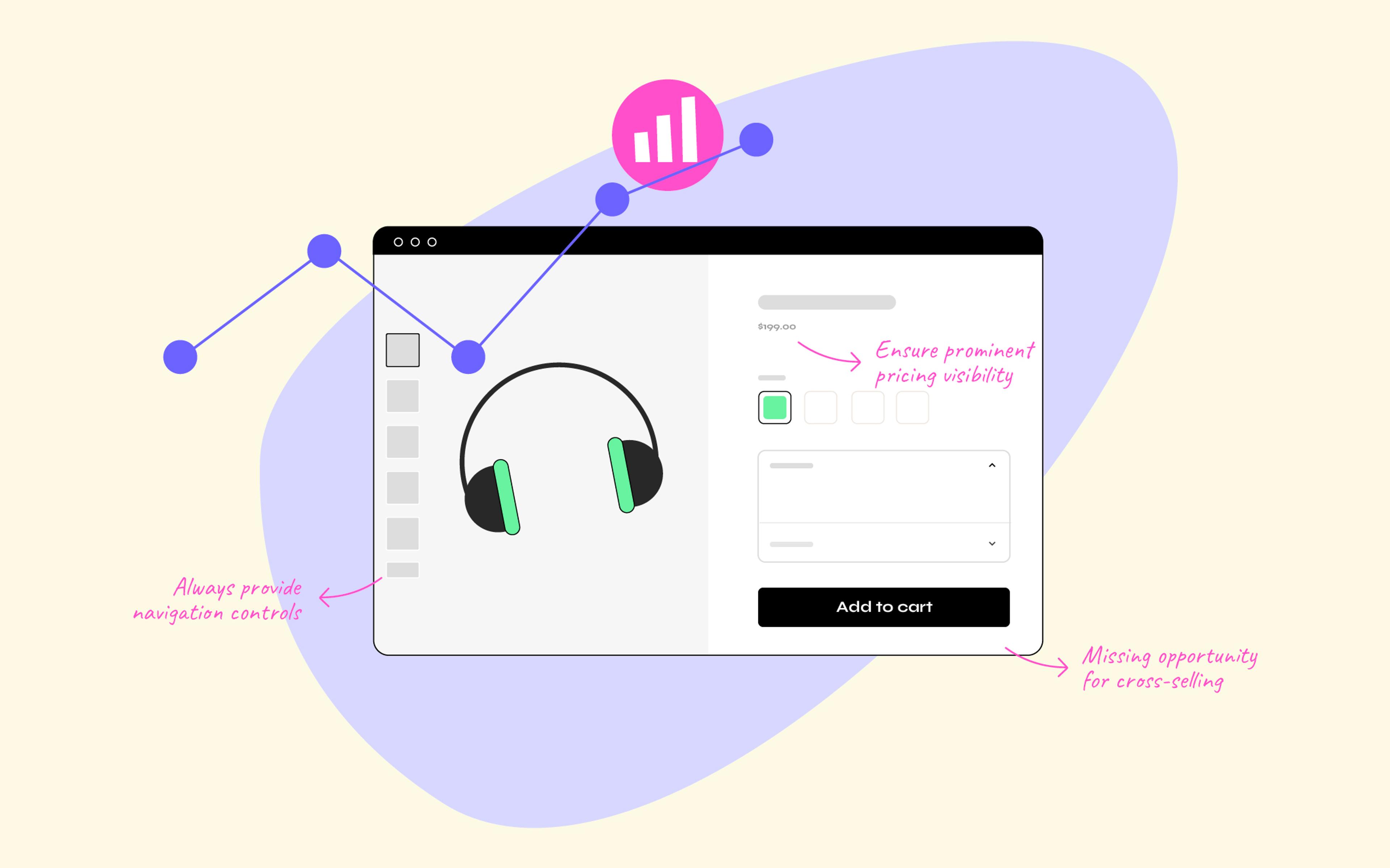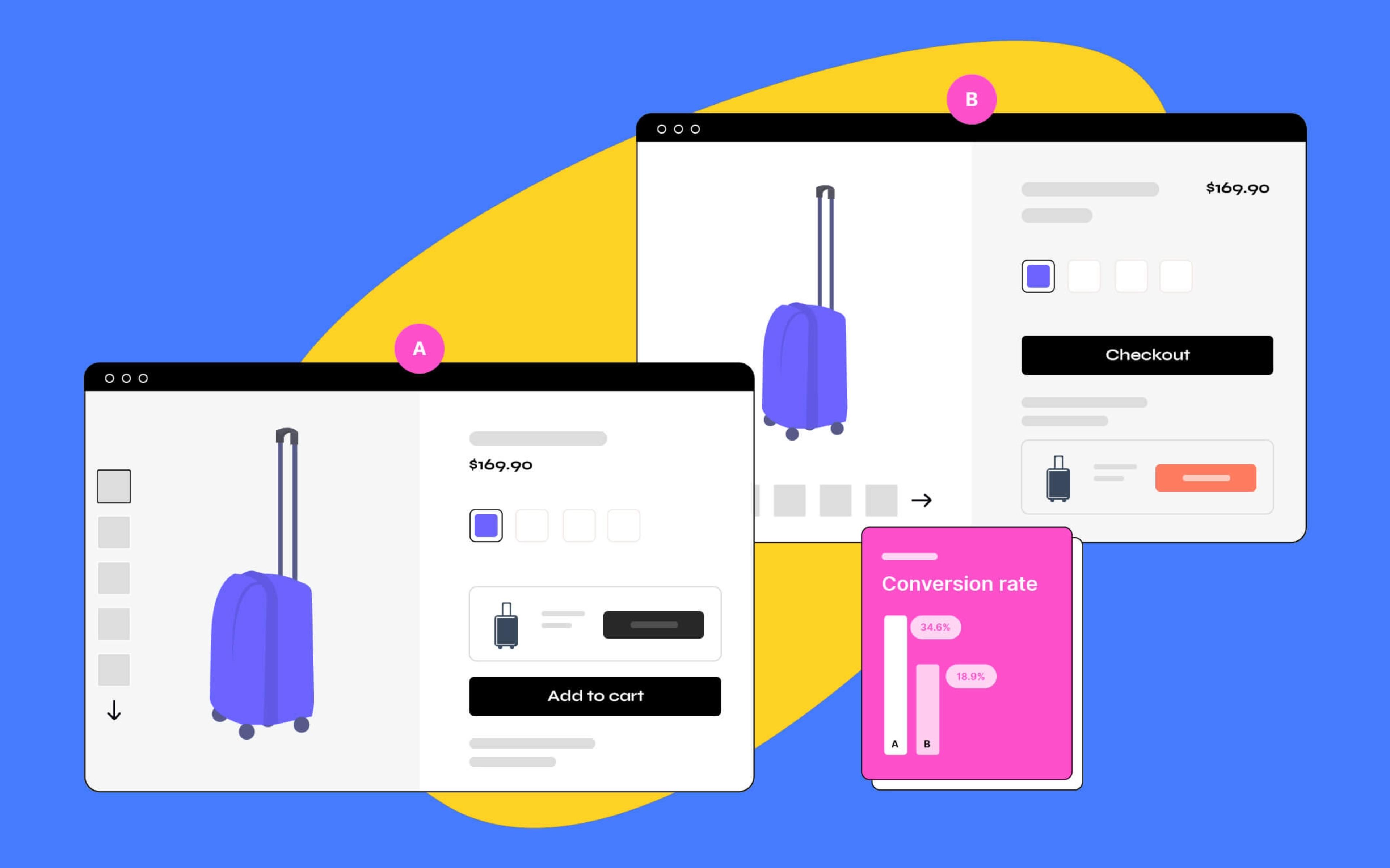The web is full of e-commerce websites that boast over-the-top designs, top-notch storytelling, and incredible lifestyle imagery. However, some of these stores still fail to effectively acquire new customers, or to give previous customers a reason to come back.
Faced with this conundrum, brand owners often fall into the trap of adding more products, more content, and more apps to their store in hopes of solving the problem. Unfortunately, more often than not, this approach only makes the situation worse, leading to a more bloated, slower store that drives even more customers away.
When your store is not generating the results you’re looking for, it can help to see things from a fresh perspective, and design audits are structured to accomplish precisely that goal.
A design audit is a systematic review of specific areas of your store. The goal is to identify bottlenecks that are artificially driving down KPIs such as conversion rate (CVR), average order value (AOV), or repeat purchase rate (RPR). The audit benchmarks the store's visual design and user experience against industry best practices, considering factors such as customer feedback and satisfaction, accessibility, information architecture, and page speed across different device categories.
At Nebulab, we’ve been running design audits for our clients to help them identify what touchpoints (or absence thereof) create the most friction, what opportunities hold the most growth potential, and where to focus next. In this article, we’ll examine what benefits an audit can deliver to your brand, when it makes sense to run a one, and how the ideal audit is structured.
The Benefits of E-Commerce Design Audits
A good design audit will not only provide you with a list of usability issues and opportunities for improvement: it will also help you understand why these are the right things to be focusing on.
For example, fashion brands often struggle with their product discovery flow. With an extensive product catalog, it can be challenging to implement proper search and filtering functionality and strike the right balance between what the consumer is looking for and what products the brand wants to prioritize. The business impact is enormous: according to Baymard, cart abandonment rates on e-commerce sites with poor product listing pages are in the 67-90% range, dropping to a mere 17-33% when the usability issues are corrected.
By arming brands not just with insights about the status of their customer experience, but also with data about the business relevance of those insights, design audits allow brands to move faster and with more confidence as they work to improve your top line and bottom line.
Here are a few other benefits of e-commerce design audits:
- Conversion Rate Optimization: many brands approach CRO through the lens of A/B testing, running experiments for every change they have in mind. While A/B testing has its role, it comes with non-negligible complexity and is not always warranted. A design audit can highlight the “fundamental” improvements you can make to increase conversions immediately, while also identifying areas where more data is needed to make a decision.
- Brand Consistency: early-stage brands need to move fast. As designers work frantically to keep up with the pace of the business, brand consistency often takes a hit. A design audit can provide the opportunity for a “brand reset,” taking stock of the brand’s digital touchpoints and ensuring they’re all working in harmony to provide a coherent image of your brand.
- Stakeholder Alignment: while the human element can never be completely removed from decision-making, design audits help harmonize the opinions of different teams and stakeholders by bringing trusted qualitative and quantitative insights into the discussion. In turn, better stakeholder alignment leads to improved team satisfaction and higher productivity.
- Overhead Reduction: sometimes, brands create human-driven processes to make up for existing inefficiencies. Design audits can shed light on situations where a better website design choice or a greater amount of automation can help you reduce operational overhead, freeing up your resources to focus on more strategic, higher-leverage projects.
- Search Engine Optimization: while design audits are typically not directly aimed at SEO, many design improvements can boost SEO as a secondary benefit. Some examples of this include improvements such as adding breadcrumbs to your navigation and improving website performance on desktop and mobile.
At this point, the advantages of conducting a design audit should be sufficiently clear. But how do you know when to perform one?
When To Conduct a Design Audit
For brands that iterate on their online store very often, it’s helpful to perform design audits at a fixed cadence, e.g., every six months. With that said, there are a few additional key moments and indicators you want to watch out for:
- After a major feature release: it is often a good idea to follow up on large feature releases with a design audit. This can help guarantee brand consistency and ensure that no guidelines have been overlooked while implementing the new functionality. In this case, the audit can be scoped to the portions of your digital experience that have been changed significantly.
- When you see a drop in KPIs: if you see a drop in performance and can’t pinpoint the root cause, a design audit might help you clarify the problem. You can look at which metrics were impacted to understand where to focus your investigation or run a site-wide audit if you’re unsure where the friction is. Examples here are an increase in bounce rate, a drop in conversion rate or a decrease in average order value.
- When you need to drive efficiency: if you’re looking for ways to increase business efficiency, a design audit can help you uncover cumbersome user journeys that can be streamlined or automated. In this case, you should also evaluate an audit of your back office, as it has the potential to to highlight ways that you can make your team’s lives easier.
If you fit one of these scenarios, a design audit might be in order. More broadly, if you are facing a CX-related issue that could benefit from a fresh pair of eyes, a design audit can provide the clarity you need.

How We Conduct Design Audits
When our design team conducts an audit, the content is typically customized based on factors such as the brand’s stage, target audience, product category, e-commerce business model, and current challenges and priorities, as reported by key stakeholders.
That said, there are certain steps in our audit process that we always follow, and they can serve as a good template if you want to run a design audit in-house.
1. Define the Audit Scope
The first step is always to determine which areas of your website the audit should cover.
For example, if the majority of your traffic comes from mobile, it makes sense to prioritize the mobile experience over desktop. If you’re seeing a drop in AOV, you’ll want to look deeper into your product discovery and cross-selling/upselling flows.
At this stage, we typically examine topline traffic and talk to stakeholders to understand the key issues and opportunities. We want to ensure the audit is as objective as possible while also reflecting the business's real challenges and goals.
2. Analyze Customers and Competitors
When conducting an audit, we often find that brands have a treasure trove of data they’re not exploiting fully. Tools like Google Analytics, heatmaps, product reviews, customer support tickets, and loyalty programs can all offer valuable insights into user behavior, help uncover patterns, and identify points of friction in the customer experience.
In addition to looking at the brand’s zero-party and first-party data, we also look at competitors to evaluate them against the brand’s experience. While you don’t want to be the same as everyone else, understanding how your competition stacks up to you can help you prioritize areas for improvement, brainstorm new customer touchpoints, and double down on your competitive advantages.
3. Evaluate Your UX and UI
This is where things get interesting! Based on the context we have collected, we evaluate the store's digital design against industry best practices and foundational design principles, blending them with our expertise to pinpoint the areas of highest impact.
This assessment is completed by carrying out specific tasks from the customer’s perspective. It can be a site-wide analysis or it can focus on select areas of your store, such as:
- Homepage
- Main navigation
- Categories
- Website search
- Product Detail Page (PDP)
- Product Listing Page (PLP)
- Filtering and sorting
- Cart and checkout
- Account pages
With each insight, we include references to the guidelines and best practices that informed our analysis, one or more actionable recommendations on how to create a better user experience, and an explanation of the expected business impact.
Sometimes, we also provide sketches and mockups of the design enhancements we suggest so you can better envision the result.
4. Prioritize the Results
It is not uncommon for a design audit to run 40-50 pages in length. If left in its raw form, such a vast amount of information can be challenging for brands to ingest and make sense of, leading teams to endless debates about what suggestions to implement and, ultimately, analysis paralysis.
To avoid this problem and aid brands with prioritization, we score the audit’s results according to their impact on customer experience, desirability to the end user, and feasibility for the brand’s design/development team.
This scale, coupled with a scoring mechanism and full executive summary, allows for a more strategic allocation of resources that accounts for the brand’s current goals and their broader business context.
Design Audits Foster a User-Centric Mindset
Besides their immediate benefits, what we appreciate most about e-commerce website audit is their ability to foster a customer-centric mindset.
A good design audit taps into multiple sources of quantitative and qualitative insights and industry best practices, and presents all the data in a digestible and actionable way. In doing so, it helps brand executives elevate the customer experience to perfectly fit into the customer’s daily context, needs, and aspirations. This inevitably leads to happier customers and stronger business outcomes.
If you have any questions about conducting design audits or would like our team to help with your very own audit, feel free to reach out!



